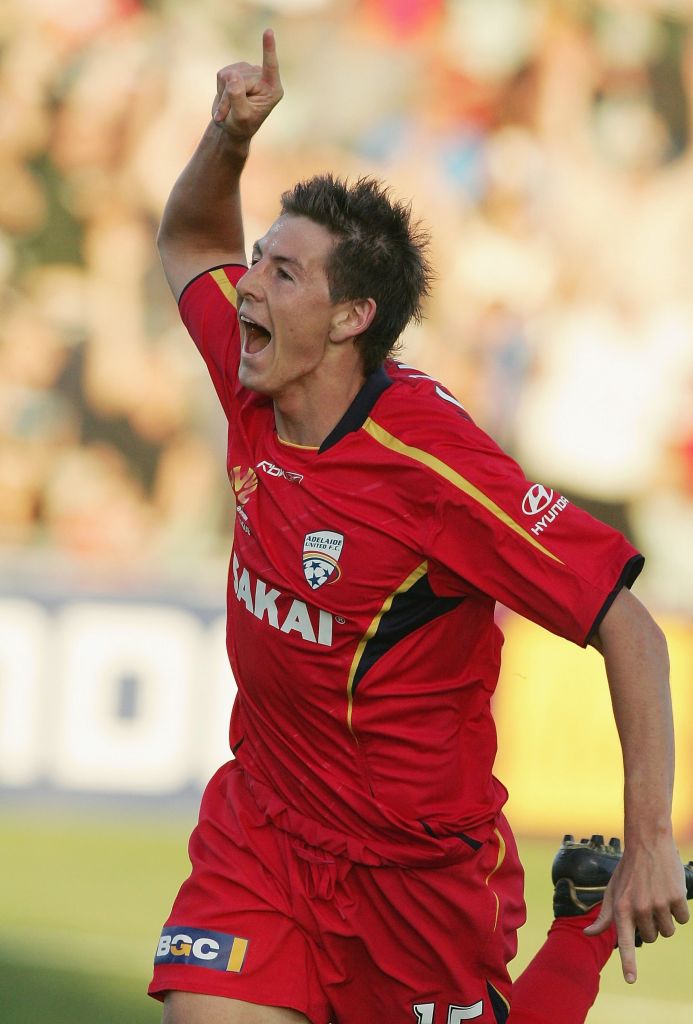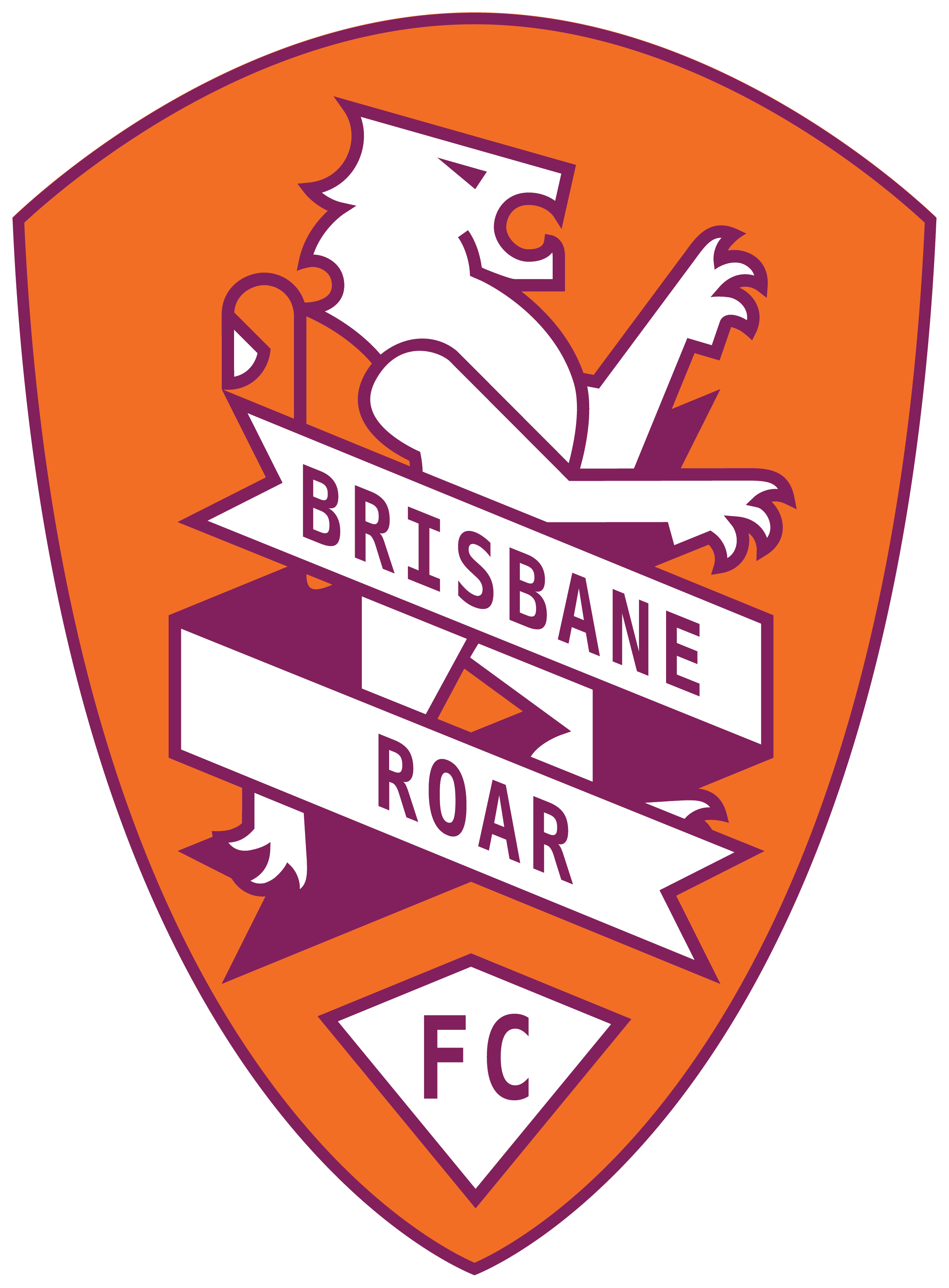As two of the Isuzu UTE A-League’s finest young talents go head to head, Tom Smithies hears lessons learnt by tyros who came before.
Nathan Burns can remember the exact words used to tell him his debut in professional football for Adelaide United was seconds away. “Burnsy, you’re going up front,” his coach, John Kosmina told him with a few minutes left of United’s trip to Melbourne Victory in 2006.
“I was like, that’s okay, but what do you want me do up there? But that was it, he threw me on and I just did my thing. It was like freedom, go do what you do.”
The world is a very different place to August 2006, but some things stay the same. Adelaide United once again have a teenage winger of huge potential, and debate still rages about how you best allow those young talents to turn that potential into glorious achievement.
For the 18-year-old Burns in 2006 read Nestory Irankunda, 17, in 2023 – both raw, headstrong and the sort of players fans will queue to watch.

There was, oddly, almost a sense of anti-climax in some quarters this week when national coach Graham Arnold cooled expectations of Irankunda being picked for the Socceroos in the near term – a player with combined playing time as a professional so far of just over five matches.
That is entirely testament to the astonishing goals scored in that time from a teenager who admits to eschewing tap-ins, but it’s part of a wider debate about how coaches and clubs can nurture, protect and ultimately grow the brightest young talents across the A-League.
Melbourne City are really starting to see the rewards for their careful management of Marco Tilio since since he switched from Sydney FC two-and-half years ago, amassing 65 games at the age of 22 but starting only about half of those. Irankunda is at the very start of that process, and so far Adelaide have kept a close and protective arm around him.
Thanks in large part to the pandemic, far more young players have in the last two to three seasons been given the one thing everyone agrees is vital for their development – game time. Though the numbers have crept back up, compare the average age of the team Burns came into in 2006 with Adelaide’s average starting age this season, almost three years younger.
Some clubs, like Adelaide and the Mariners, have made it a policy to not just try to develop young players but blood them too. Those that quickly shine will be venerated by the fans but by the media too, adding to the instant and loaded feedback the players get directly on social media.
These can be heady days for young players with a handful of good appearances under their belts and the world apparently at their feet. It’s what can then happen in their heads that is the biggest danger to further progress – hard not to believe your own hype.
“When I was coming through, there were barely any younger players getting regular A-League minutes and the experienced players were relied on more heavily,” says Tommy Oar who knows only too well the pressures of instant stardom.
“I think clubs are more clued in to the potential transfer fees younger talents can attract, and are more willing to be patient with players initially.”
Oar credits several influences for the fact he was able to retain an even keel after making his Socceroos debut – and earning rave reviews – aged just 18 in March 2010, the same month he won the A-League’s Young Player of the Year award.

“I was extremely fortunate to have an extremely supportive network around me of senior players and coaches nurturing me, which isn’t a luxury everyone received,” Oar recalls now. “The most support was undoubtedly from my family and they encouraged me to finish High School, which many players choose to forgo.
“In my first season under Frank Farina and training everyday with the likes of Craig Moore, Danny Tiatto and Matt McKay, they all took me under their wing, and showed me what it takes to be a pro in what was really a sheltered environment.
“They were still demanding every day at training, but they also protected me and didn’t give me more minutes then I deserved, and ensured I remained confident. It wasn’t until Ange came in shortly after that I started my first appearances, and his positivity rubbed off on me.”
Pim Verbeek, the Socceroos head coach, pleaded with the media not to label Oar as the next Harry Kewell, but might as well have been speaking in his native Dutch. A teenager with a devilish left foot had to be bracketed with Kewell.

“At that point, thanks to that strong support network around me, I didn’t overthink things too much,” Oar adds. “Every time I stepped on the pitch I would try and express myself and the senior players around me kept me grounded.
“That support I had from my family and friends didn’t allow me to overthink the situation or think I was better than what I was. Because it all happened so quickly perhaps worked to my advantage as It hadn’t sunk in what I was actually doing.”
***
That was always the traditional model, where the gnarled old pro’s kept the kids’ exuberance in check. But when you have a team studded with youngsters – and a generation now that takes rather less kindly to being shouted at – a different toolkit is required.
Nick Montgomery could see that when he retired as Mariners captain and took over the club’s academy, after a lengthy career in the UK.
“I came from a different generation and I had to adapt and understand where those kids are coming from,” Montgomery says.
“We structured a lot of support for them, sports psychologist, support officers and so on, try to build them up emotionally – give them the tools so that when they are on the cusp of the first team they’ve been preparing for that point mentally as well as physically.
“So when I became head coach of the first team there was a pathway there. It’s still a gamble, throwing a young kid in, but how do they learn otherwise? There’s a lot of factors to consider, like putting in a young defender could cost you a goal if they make a mistake.
“Some coaches won’t take the risk with young players, some throw them in when they might not be ready, to see… you have to find the balance. If you know them well enough, you know when they’re ready.”
The journey of any young player is unique too. Some still live at home and have breakfast made by their mum or dad; by contrast, someone like Burns left home in rural NSW at 14 to play and be billeted in Sydney, so was already independent when he got close to the elite game.
“That happened to me early, which probably gave me the kickstart on everyone else in my age group,” Burns says. “I was probably lucky that I moved away from home at 14. It was still the hardest part of my life, easily. Then I moved to the Australian Institute for Sport at 17 and life was never so easy. All my food, my accommodation, everything was organized.”

It helped that in his developing years, Burns didn’t have the distraction of social media and reading comments from fans. You get the impression it would have made little difference to his determined mindset, not least because of one simple rule.
“I know that this generation is obviously a lot more on their phones and stuff like that but at the end of the day there’s only really three people that matter. I used to say this all the time, I only cared what my dad thought, what my coach thought, and what my best friend thought. Never mind the rest, I’d always ask them… and my agent Bernie (Mandic). Well, I wouldn’t ask him, he just told me!”
But not all players are able to be so focused. Part of Montgomery’s job is managing the expectations of kids who might think – or are being told by others – that they’ve made it.
“You need to have a clear pathway for each player and constant communication,” he says. “Be as honest as you can. With Garang Kuol, we had him from 16 and he was a huge talent with a lot of self belief, but in truth he had no game understanding.
“So we were trying to teach him how to have an impact off the bench – lots of video work for instance. Sometimes you put your arm around him, sometimes be hard with him; like every player you have to get to know them. And in his case, he worked hard and got his move to Newcastle and went to the World Cup.”
Burns can see that the transition to a more professional environment even for academy players helps in the sense of filling more hours in the day with football-related work – not clear afternoons to be filled with activities less conducive to becoming a good pro.
“The young ones coming up, actually you have so little time these days to do anything stupid,” he says. “Even when I was growing up, we probably went out more than the players do now. Now there’s recovery, training, monitoring, and that’s before you play the actual games.”
Montgomery tried to accentuate that at the Mariners by filling the young players’ days with training, video sessions, massage, anything to tire them out and encourage a virtuous cycle of training and sleeping. “But you can’t follow them round 24 hours a day – you have to educate them on nutrition, sleeping, things like that,” he says.
“In one sense it’s lucky, the money they earn here isn’t as crazy as it is in Europe for some of the kids, but it’s still about the company you choose to keep.”
He laughs at the suggestion that he might mimic Sir Alex Ferguson’s early days at Manchester United, where famously he would hear of youth team parties via a grapevine of spies and show up unexpectedly to send his players home.
“There has to be a certain level of trust eventually,” Montgomery says. “Mind you, having said that, I’ve been here for more than 10 years now, I do know a lot of people on the Central Coast. You’d be surprised what gets back to me…”





